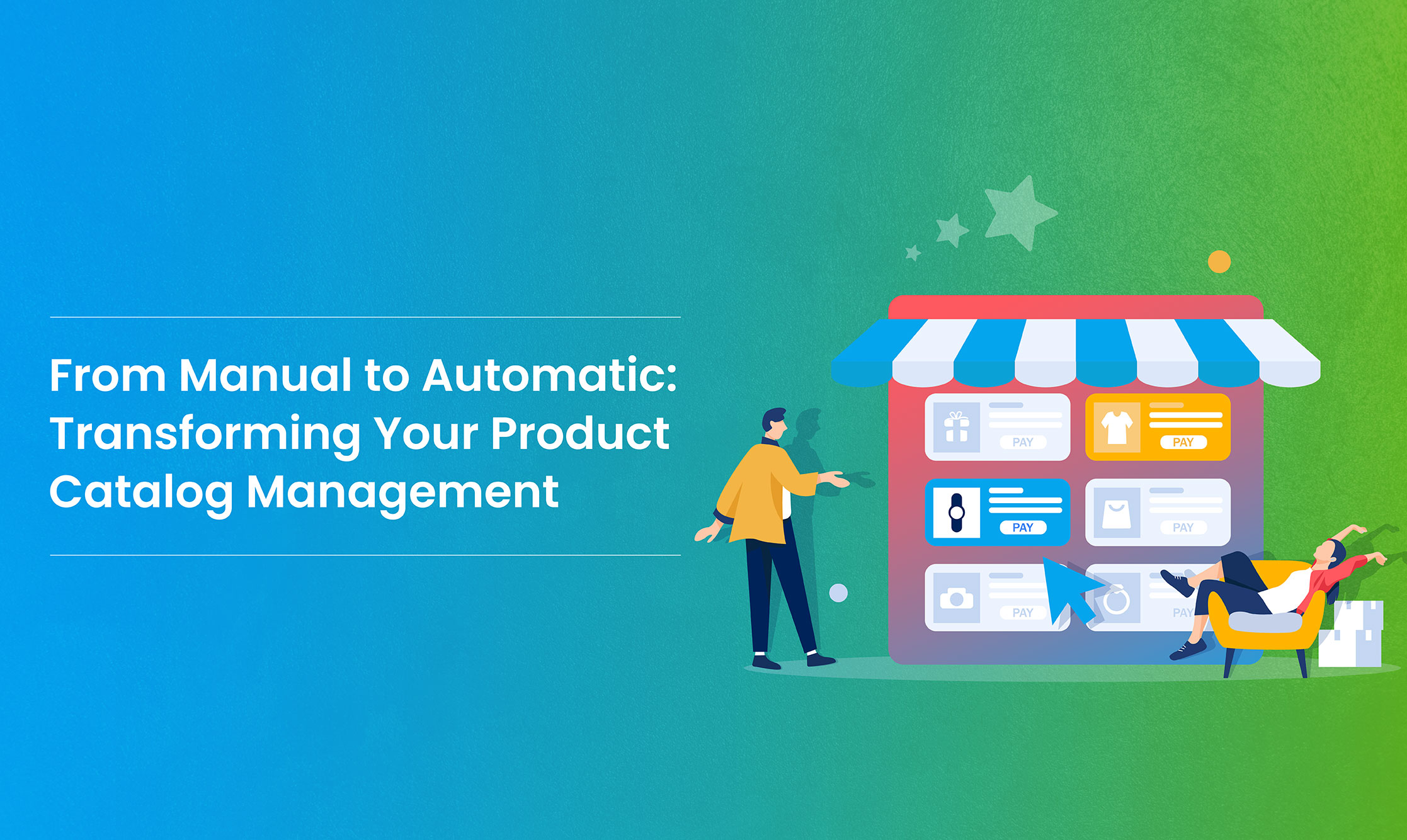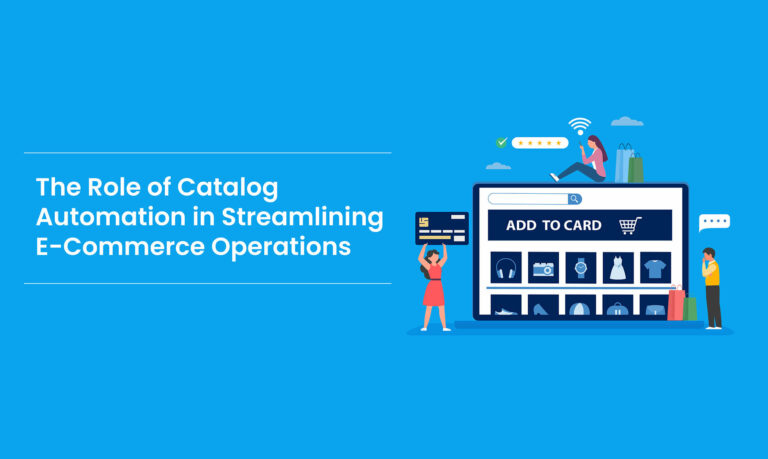Introduction
Businesses looking to develop and succeed must manage their product catalogs effectively in the quickly changing e-commerce industry. Catalog management has always been a labor-intensive procedure that is frequently prone to mistakes and inefficiencies. However, because of technology, organizations can now automate these procedures, which opens the door to increased customer satisfaction and productivity.
The Challenges of Manual Product Catalog Management
Manual product catalog management poses numerous challenges for businesses, including:
- Time-consuming Processes: Adjusting product data (for example, information, prices, and inventory) manually may take up a lot of time and resources.
- Human Errors: Human-born error includes the hazard of missing typos and inappropriate pricing worsened by the omission of information, which is a cause of inconsistencies across channels.
- Limited Scalability: When companies start to develop their product portfolios and extend business size, it is reasonable to say that the use of the manual catalog is getting complicated and weak in scaling.
- Inefficient Updates: Timely updates to product data, including altered price or inventory, can be quite complicated due to limitations of the manual demanding work process. The accuracy of listing may become suspect and easily lag behind real-time circumstances.
- Poor Data Quality: There might be a manual process that causes inconsistent data formatting and structure, meaning it hinders analysis and decision-making.
Benefits of Automating Product Catalog Management
Automating product catalog management offers a multitude of benefits for businesses:
- Time and Cost Savings: Automation eliminates the time-consuming and recurring aspects of catalog management. It reinforces the trend of humans participating in the process by developing the strategic side of a business.
- Improved Accuracy: Eliminating manually done entries indicates that the automated process almost cancels out human errors, enabling normal and correct aversion of info across all the channels.
- Enhanced Efficiency: Automation of such processes allows real-time updates of product information, prices, and stocks without the need for human intervention so that customers have access to the most current data.
- Scalability: Automation ideas would be flexible enough to process even huge product lines without diminishing performance in terms of the quality provided.
Implementing Automated Product Catalog Management
The transition from manual to automatic product catalog management involves several key steps:
- Assessment: Assess the organization of your current catalog management processes, determine your pain points, and the extent to which incorporating automation is needed.
- Selection of Automation Tools: Do some legal research and look for automation tools or software solutions that will work correctly with your company’s needs and objectives.
- Data Migration: Transitorily place existing product data onto the automation platform to undergo the data quality assurance test.
- Configuration: Tailor the automation engine to complement your unique catalog management workflows. This would include activities like product info updates, price rules consistently updating, and inventory synchronization whenever necessary.
- Training and Adoption: Train the staff on using the automation tools correctly and make the adoption process simple by connecting them to relevant teammates.
- Monitoring and Optimization: Constantly make sure all automated processes are performing the way they should, figure out which improvements are possible, and optimize workflows so the work gets done as quickly as it can.
Exploring Implementation Strategies: Key Steps to Successful Automation
Switching from the hands-on technique of product catalog to the automatic one calls for meticulous planning and implementation. Here are key steps to ensure successful implementation:
- Assessment and Planning: First, start by examining your existing best practices in catalog management. Determining problems, weak areas or waste, and options for enhancing them. Get yourself prepared with a complete one-paper strategic plan that encompasses a set of objectives (goals), a schedule, and tools or assets you will be relying on to make the change smoother and more effective.
- Selecting the Right Solution: Select the software that matches your business objectives and features for your product catalog. Factors to look for could include scalability (multiple users), integration (integration with other apps), ease of use, and support (support services and how you get help if needed). Carry out profound research and examine the prototypical to pick the most appropriate for your company.
- Data Preparation: Make sure your product information is clean and labeled the same as other data items. It can include standardization of attributes, canceling duplicates, and post-renewal for outdated ones. Spend time on the data cleansing at the beginning to ensure the base of.
- Training and Adoption: Conduct full-scale training sessions with your staff to ensure they can operate the new system with full proficiency. Verify that your employees are acquainted with the advantages of automation, and encouraging the crossover is not difficult due to the knowledge needed to handle the computer programs. Create an adoption culture by asking for reliable feedback from the instructor or tutors and enforcing the rules when the code of conduct is broken.
- Monitoring and Optimization: Monitor the ability of this system non-stop. Use indicators such as accuracy of the data, frequency of updates, and reliability of systems to measure performance. Pick out the weak points and improve or adjust to appropriately manage the efficiency and effectiveness.
Top Practices for Product Catalog Automation that Works Every Time.
To ensure the success of your automated product catalog management initiative, consider the following best practices:
- Data Standardization: Mandate for structured data standards and formats to be maintained constantly to achieve matching details across all the product listings.
- Regular Updates: Scheduling your listings about product information, prices & inventory for monthly updates would ensure that your listings are accurate and up-to-date respectively.
- Integration with ERP and CRM Systems: Make sure your catalog management automation machine is integrated with the existing ERP and CRM systems using API for smooth data exchange and operation flow integration.
- Quality Assurance: Implement quality check mechanisms to confirm the correctness and completeness of the submitted data, thus reducing misstatements and inconsistencies.
- Feedback and Iteration: Take inputs from stakeholders and end-users to know where and how to improve the automation and then modify the automation workflow to suit the purpose.
- Security Measures: Adopt pragmatic security controls to safeguard product-related data and keep unlicensed personalities from getting access or mutilating the same.
Conclusion
To sum up, automatic product catalog administration is a must-have for any business that intends to retain its competitiveness in the cut-throat market conditions of today’s era. Organizations can face different difficulties, such as a lack of stability, and these difficulties can be avoided by introducing automation. The advantages that will come from replacing manual processes include increased efficiency, improved data accuracy, and customer satisfaction. By way of patient preparation, meticulous planning, and the selection of an accurate implementation strategy, businesses can go through this evolutionary step successfully.
Technology suites like Rubick.ai, with high-tech capabilities and simple-to-use layouts, are a solution that allows companies to quicken the process of catalog management and make their activities more efficient. As you walk on the horizon, make sure you use Rubick.ai to reshape your catalog management with the touch of a button. Let efficiency and excellence lead you by taking that very first step toward Rubick.ai as your partner. We allow you to exploit AI to accelerate growth, gain better positions, and eventually succeed.


